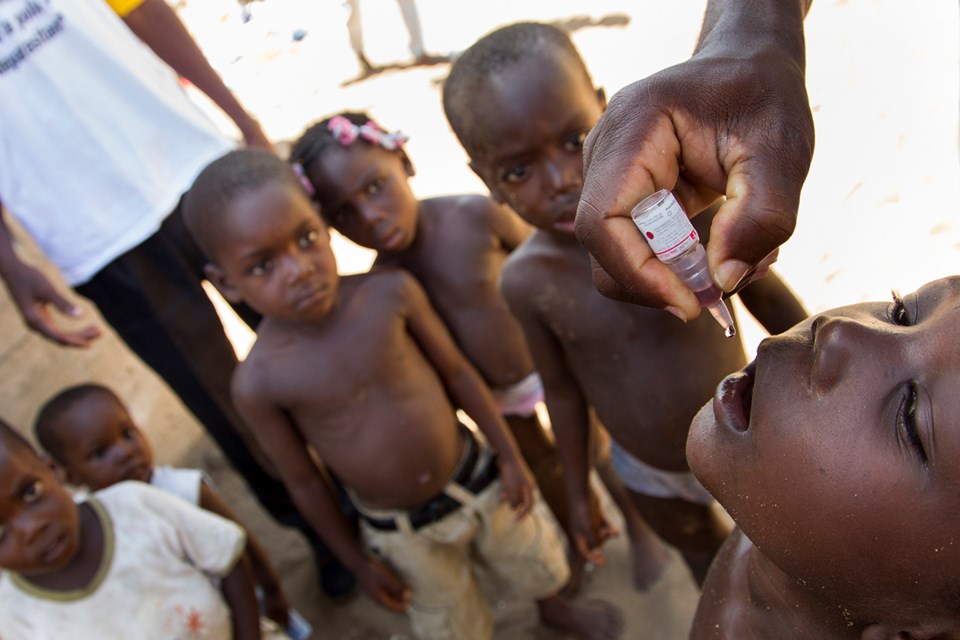The hospital in Squamish had not been open long when the community, like many others in 1953, was hit hard with a polio outbreak.
Before long, most of its beds were occupied with victims of the disease.
In Squamish and most of the world now, polio seems a distant memory, but it still exists in pockets. In response, the Squamish Rotary Club has been involved for years with efforts to eradicate the disease once and for all.
Oct. 25 is World Polio Day, and Rotary likes to draw attention to the work that has been done, as well as the challenges that remain.
This campaign has had success – there were 350,000 cases a year in 1988 but due to vaccine campaigns this dropped to 74 in 2015.
In recent years, polio hasn’t been eradicated in only two countries – Afghanistan and Pakistan – although there has been a bit of a setback because Nigeria has seen a few cases this last year.
“There’s still those strongholds where we haven’t been able to get to,” says Brian Finley, chair of the local club’s End Polio Committee.
Another challenge is a form of polio present from mutations in the oral vaccine used, so there are plans to look for better ways to vaccinate vulnerable populations.
Rotary has been at the forefront to stop the spread of polio, and has raised more than $1.5 billion US for vaccinations efforts. In Squamish, the club raised more than $18,000 in the PolioPlus campaign in 1987. Over the years, it has raised more than $51,000 US.
Even close to home, polio still affects people who contracted it before it had been eliminated from the Western Hemisphere. The first vaccine was introduced in 1955 – the same time Squamish’s Jani Rogers was born, though she was not immunized.
She was a toddler in Chilliwack when she contracted the virus, which meant being in an iron lung, though she cannot remember details from those years, as she was too young.
While she had not been vaccinated when it was first available, her mother ensured she and her siblings got their shots a few years later.
For her, the damage was done, but for much of her life, polio did not prevent her from being active, despite a bit of a limp. She never really thought about polio and assumed it was something she had put behind.
“I recovered from it as far as I was concerned,” she says.
It was only as an adult that she learned of post-polio complications such as bouts of lethargy and problems with her leg.
“I didn’t even know anything about post-polio at the time,” she says. “My legs became like spaghetti legs.”
In the 1980s she started to experience some challenges and only found out about post-polio when someone told her about the clinic UBC had at the time, which she ended up attending. There she learned she had to slow down in life. She also found it can be difficult for those without obvious physical symptoms of polio because others can assume they are perfectly healthy.
By the mid-1990s her physical situation got worse. More recently, this has meant mobility issues and using a wheelchair. She has tried to use crutches but that too comes with complications such as increased risk of falls, as well as making activities such as road trips and other vacations like a planned trip to India all the more difficult.
“I still live as good a life as I can,” she says. “I live life in between naps.”
In Squamish, two years before the vaccine was introduced, the community, like many in Canada, faced an outbreak. Across the country, Finlay says, there were about 9,000 cases and 500 deaths. Here, most of the beds in the new hospital were filled with polio victims.
Norma Kindree, whose husband Laverne was the sole doctor in Squamish, recalls how the epidemic spread and took over the hospital.
“Each day it filled up with more and more patients until full,” she says.
Even Dr. Kindree was not immune from the disease and a replacement had to be found while he was off work sick for a couple of weeks.
“He finally just stayed in the hospital,” she says.
Many in the community displayed signs of polio, especially during the peak, which lasted a few months. This often meant flu-like symptoms such as achiness and fever, though one man did develop serious complications and had to be transferred out for care and ended up living in an iron lung.
Still, even though her husband was the sole physician, she had great faith in his abilities to handle the situation.
“I had so much confidence in Laverne,” Kindree says.
Rotary is working to make sure the disease that filled the hospital beds in Squamish and that still affects Jani Rogers’ daily life is eradicated.
The club will have a booth at the Pumpkin Patch in the Park event on Oct. 22. The club also points out that any donations to fight polio will be doubled by both the federal government as well as by the Bill & Melinda Gates Foundation.
“It’s our chance to make history,” Finlay says.



